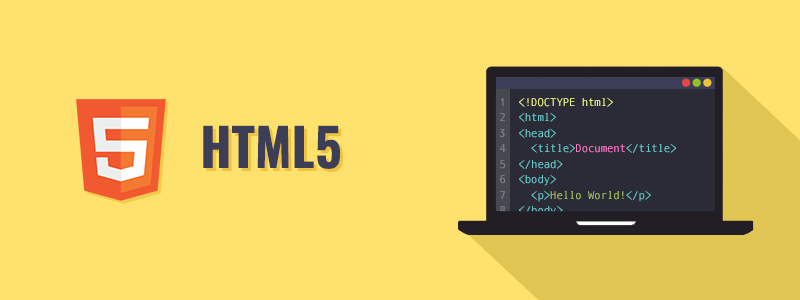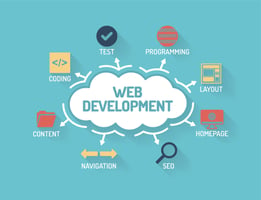In the world of web development, HTML (HyperText Markup Language) serves as the foundational...
A Beginner’s Guide to HTML5: What’s New and Why It Matters
HTML5 has transformed the way websites and web applications are built, enhancing the user experience, improving accessibility, and making development more efficient.
Whether you're new to web development or looking to update your skills, understanding HTML5 is essential. In this guide, we'll explore what's new in HTML5 and why it matters for beginners and professionals alike.

What is HTML5?
HTML5 is the fifth and latest major version of HTML (HyperText Markup Language), which is the standard language used to create and structure content on the web. Released by the World Wide Web Consortium (W3C), HTML5 was designed to improve the language with support for multimedia elements, robust APIs, and better performance.
Key Features of HTML5
-
New Semantic Elements
One of the most significant changes in HTML5 is the introduction of new semantic elements that provide more meaningful structures to web pages. Elements like
<header>,<footer>,<article>,<section>, and<aside>replace the generic<div>tags, making code more readable and accessible to search engines and assistive technologies. -
Enhanced Multimedia Support
HTML5 has revolutionized multimedia on the web by introducing native support for audio and video elements without requiring third-party plugins like Flash. The
<audio>and<video>tags allow developers to embed media directly, improving compatibility across devices and browsers. -
Canvas and Scalable Vector Graphics (SVG)
The
<canvas>element in HTML5 allows for drawing graphics, animations, and game elements on the fly using JavaScript. Additionally, HTML5 supports SVG, a language for describing two-dimensional graphics. This is a game-changer for creating interactive, high-quality visuals on web pages. -
Form Enhancements
HTML5 has introduced new form input types like
email,date,url, andnumber, which provide built-in validation, improving user experience and reducing the need for complex JavaScript validations. It also includes new attributes likeplaceholder,required, andautofocus, making forms more intuitive and easier to use. -
Improved Accessibility
Accessibility is a key focus of HTML5. The new semantic elements and attributes improve the structure of web content, making it easier for screen readers and other assistive technologies to interpret and navigate web pages. This is crucial for creating inclusive web experiences for users with disabilities.
-
Offline Capabilities with HTML5 APIs
HTML5 introduces APIs that enable offline functionality and local storage, which is a huge benefit for web applications. The
localStorageandsessionStorageAPIs allow web apps to store data on the client side, making it possible to save user preferences or work offline. Additionally, theCache APIenables developers to specify files that should be cached for offline access, enhancing the usability of web applications. -
Responsive Design with Media Queries
HTML5 works hand-in-hand with CSS3 to enable responsive design through media queries. This allows web pages to adjust their layout and appearance based on the screen size, orientation, and resolution of the device, providing a consistent and optimal user experience across desktops, tablets, and smartphones.
-
Geolocation
The Geolocation API is a powerful addition to HTML5, allowing websites to request and use the geographical location of a user. This feature is widely used in mapping services, local search engines, and location-based applications, enhancing the interactivity and personalization of web experiences.
Also Read: 9 Types of Jobs to Consider After Learning HTML
Why HTML5 Matters
-
Enhanced User Experience
The new features of HTML5, such as multimedia support, offline capabilities, and responsive design, greatly enhance the user experience. Websites built with HTML5 are faster, more interactive, and accessible across different devices and browsers.
-
Streamlined Development
HTML5 simplifies web development by reducing the need for external plugins and complex scripting. The improved semantics, form controls, and built-in multimedia capabilities allow developers to create rich web applications more efficiently and with cleaner code.
-
Better Performance
HTML5 is designed to improve performance, particularly on mobile devices. It reduces reliance on external resources and plugins, leading to faster load times and a smoother user experience. Features like the
<canvas>element allow for high-performance graphics and animations directly within the browser. -
Increased Accessibility
By making websites more semantic and structured, HTML5 helps improve accessibility for all users, including those with disabilities. This not only enhances usability but also aligns with legal requirements and best practices for inclusive design.
-
Future-Proofing Your Skills
As the standard for modern web development, learning HTML5 is essential for staying relevant in the industry. With its wide adoption and continuous updates, HTML5 knowledge will remain valuable for the foreseeable future, making it a must-have skill for anyone entering the field of web development.
Conclusion
HTML5 represents a major leap forward in web development, offering new features and improvements that benefit both developers and users. By understanding and leveraging these new capabilities, you can create more engaging, efficient, and accessible web experiences.
Whether you're just starting out or looking to update your skills, mastering HTML5 is a step towards becoming a more proficient and versatile web developer.
To practice and refine your skills, you can use an online html compiler, which allows you to write and test your code instantly without needing to set up a local development environment. Embrace the power of HTML5, use tools like online HTML compilers, and start building the web of the future today!


